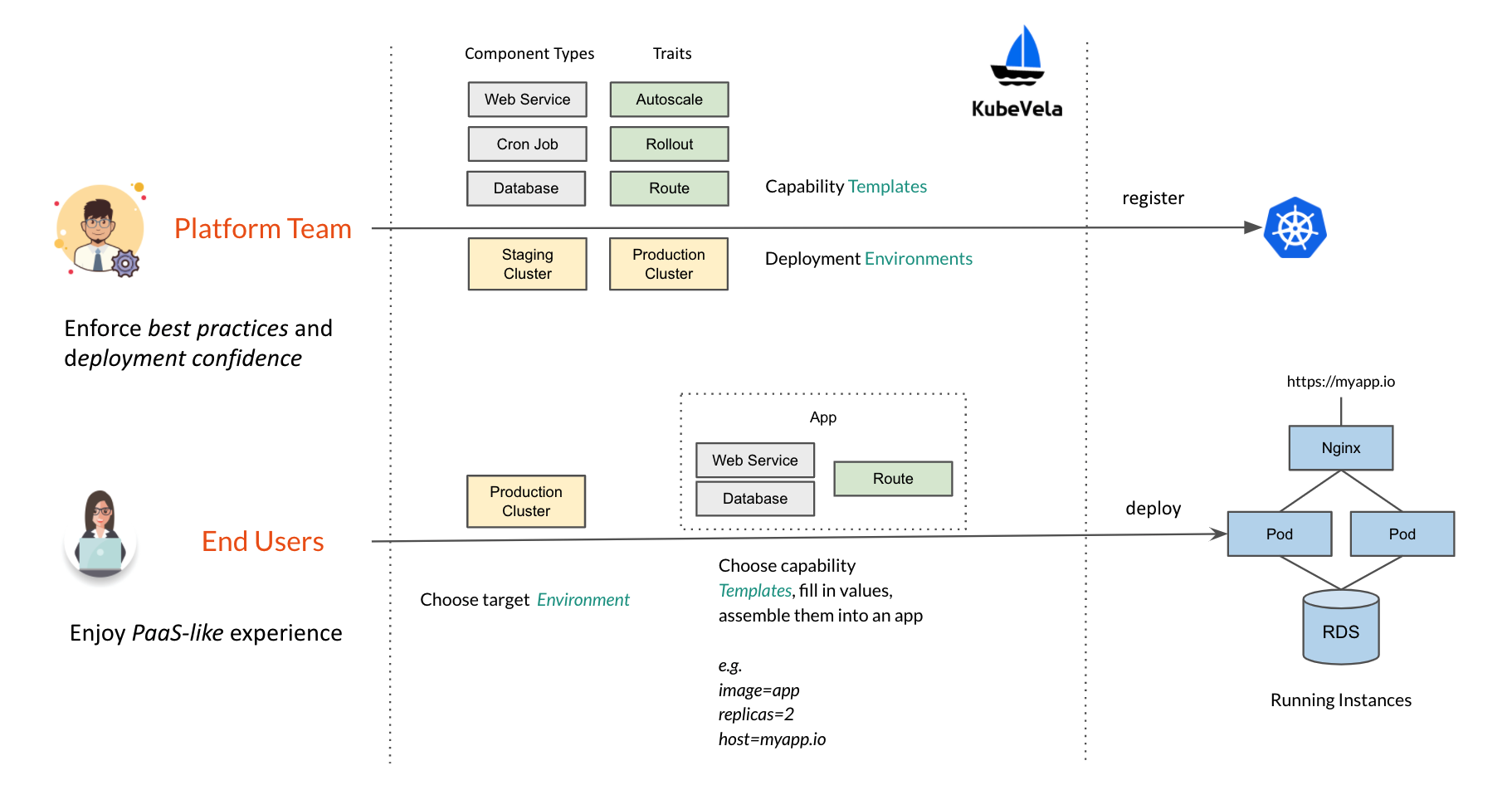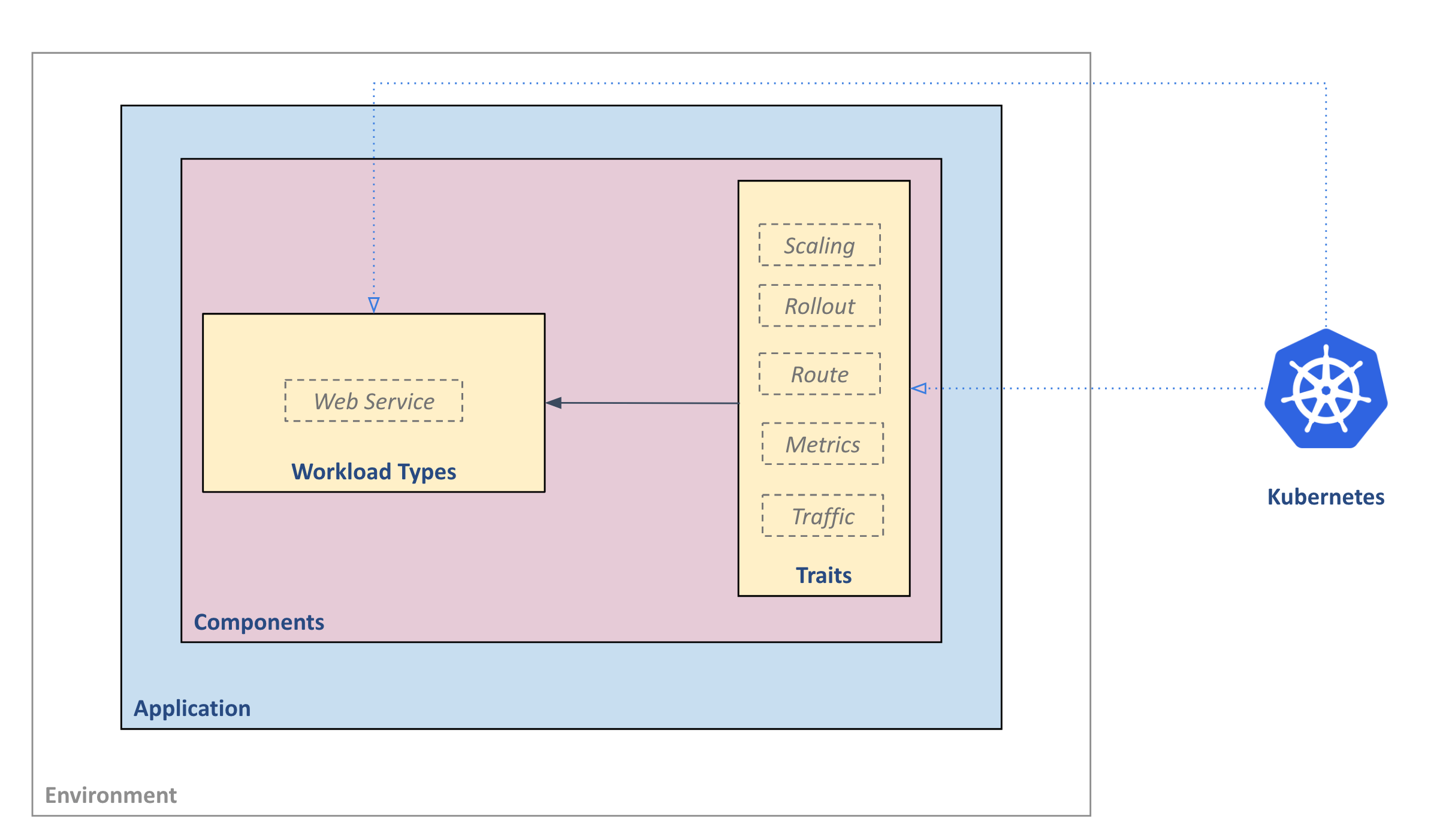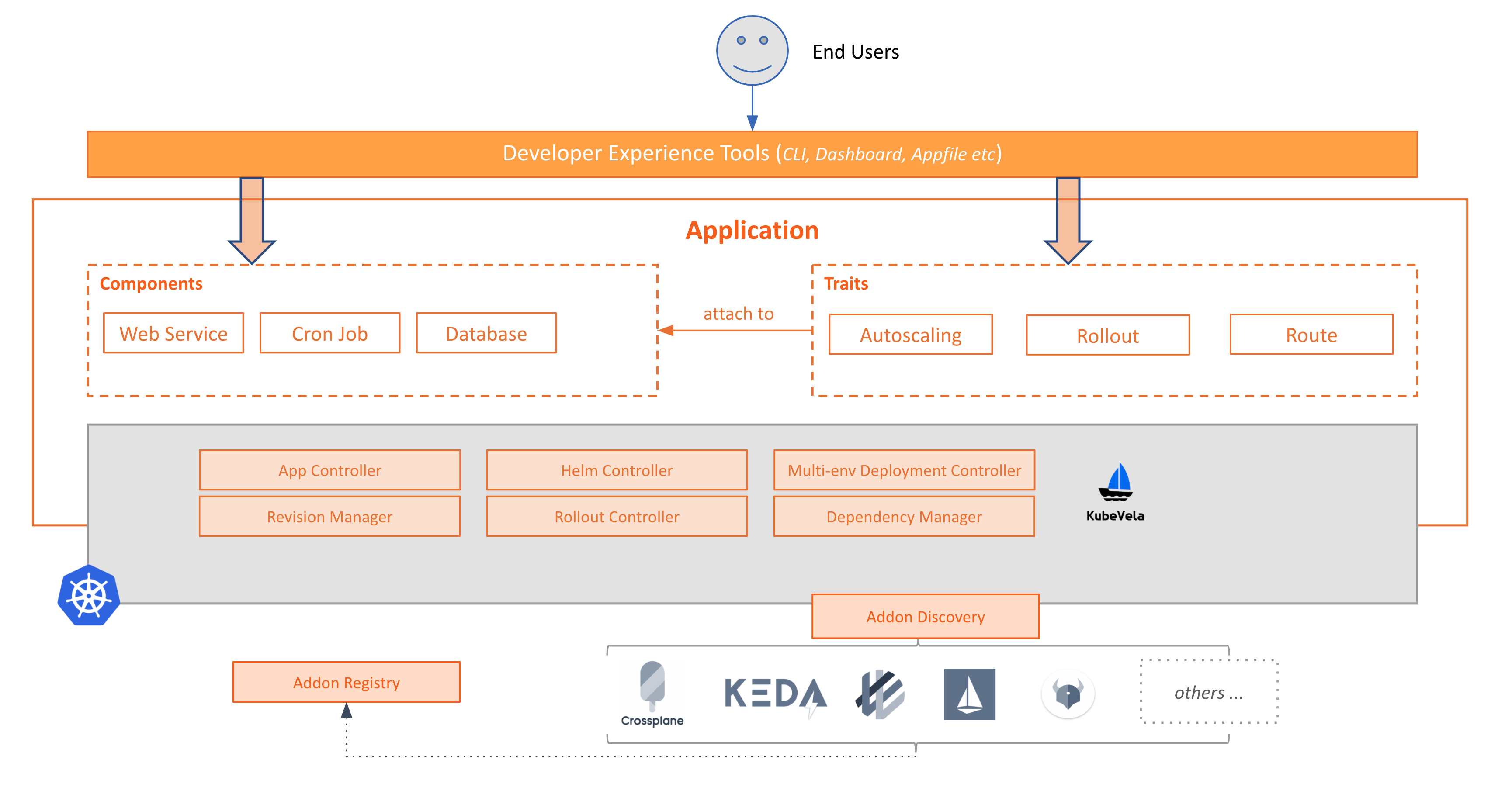5.6 KiB
| title |
|---|
| How it Works |
"KubeVela is a scalable way to create PaaS-like experience on Kubernetes"
In this documentation, we will explain the core idea of KubeVela and clarify some technical terms that are widely used in the project.
Overview
First of all, KubeVela introduces a workflow with separate of concerns as below:
- Platform Team
- Defining templates for deployment environments and reusable capability modules to compose an application, and registering them into the cluster.
- End Users
- Choose a deployment environment, model and assemble the app with available modules, and deploy the app to target environment.
Below is how this workflow looks like:
This template based workflow make it possible for platform team enforce best practices and deployment confidence with a set of Kubernetes CRDs, and give end users a PaaS-like experience (i.e. app-centric, higher level abstractions, self-service operations etc) by natural.
Below are the core building blocks in KubeVela that make this happen.
Application
The Application is the core API of KubeVela. It allows developers to work with a single artifact to capture the complete application definition with simplified primitives.
Why Choose Application as the Main Abstraction
Having an "application" concept is important to any developer-centric platform to simplify administrative tasks and can serve as an anchor to avoid configuration drifts during operation. Also, as an abstraction object, Application provides a much simpler path for on-boarding Kubernetes capabilities without relying on low level details. For example, a developer will be able to model a "web service" without defining a detailed Kubernetes Deployment + Service combo each time, or claim the auto-scaling requirements without referring to the underlying KEDA ScaleObject.
Example
An example of website application with two components (i.e. frontend and backend) could be modeled as below:
apiVersion: core.oam.dev/v1beta1
kind: Application
metadata:
name: website
spec:
components:
- name: backend
type: worker
properties:
image: busybox
cmd:
- sleep
- '1000'
- name: frontend
type: webservice
properties:
image: nginx
traits:
- type: autoscaler
properties:
min: 1
max: 10
- type: sidecar
properties:
name: "sidecar-test"
image: "fluentd"
Building the Abstraction
Unlike most of the higher level platforms, the Application abstraction in KubeVela is fully extensible and does not even have fixed schema. Instead, it is composed by building blocks (app components and traits etc.) that allow you to onboard platform capabilities to this application definition with your own abstractions.
The building blocks to abstraction and model platform capabilities named ComponentDefinition and TraitDefinition.
ComponentDefinition
You can think of ComponentDefinition as a template for workload type. It contains template, parametering and workload characteristic information as a declarative API resource.
Hence, the Application abstraction essentially declares how users want to instantiate given component definitions. Specifically, the .type field references the name of installed ComponentDefinition and .properties are the user set values to instantiate it.
Some typical component definitions are Long Running Web Service, One-time Off Task or Redis Database. All component definitions expected to be pre-installed in the platform, or provided by component providers such as 3rd-party software vendors.
TraitDefinition
Optionally, each component has a .traits section that augments the component instance with operational behaviors such as load balancing policy, network ingress routing, auto-scaling policies, or upgrade strategies, etc.
You can think of traits as operational features provided by the platform. To attach a trait to component instance, the user will use .type field to reference the specific TraitDefinition, and .properties field to set property values of the given trait. Similarly, TraitDefiniton also allows you to define template for operational features.
We also reference component definitions and trait definitions as "capability definitions" in KubeVela.
Environment
Before releasing an application to production, it's important to test the code in testing/staging workspaces. In KubeVela, we describe these workspaces as "deployment environments" or "environments" for short. Each environment has its own configuration (e.g., domain, Kubernetes cluster and namespace, configuration data, access control policy, etc.) to allow user to create different deployment environments such as "test" and "production".
Currently, a KubeVela environment only maps to a Kubernetes namespace, while the cluster level environment is work in progress.
Summary
The main concepts of KubeVela could be shown as below:
Architecture
The overall architecture of KubeVela is shown as below:
Specifically, the application controller is responsible for application abstraction and encapsulation (i.e. the controller for Application and Definition). The rollout controller will handle progressive rollout strategy with the whole application as a unit. The multi-env deployment engine (currently WIP) is responsible for deploying the application across multiple clusters and environments.



